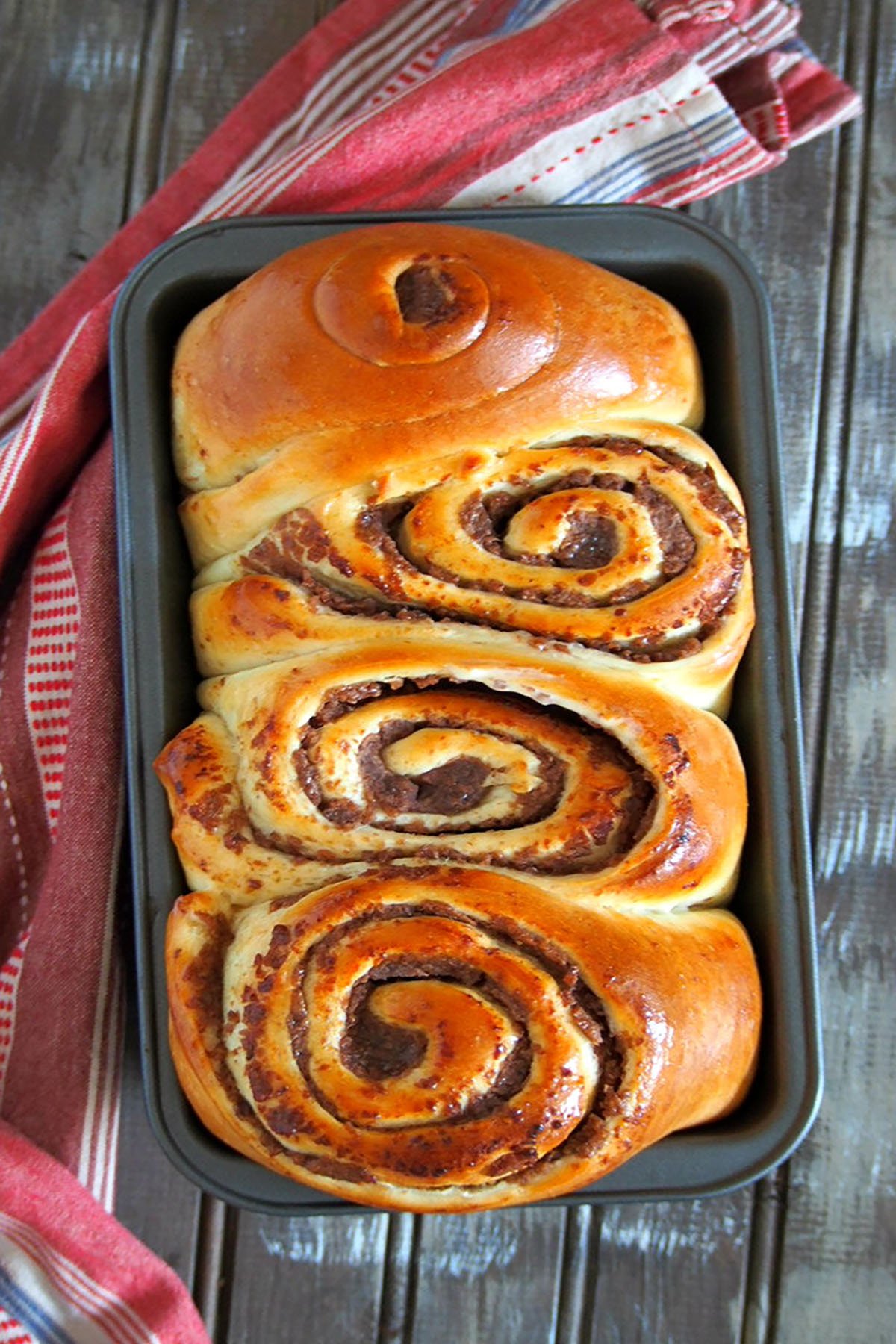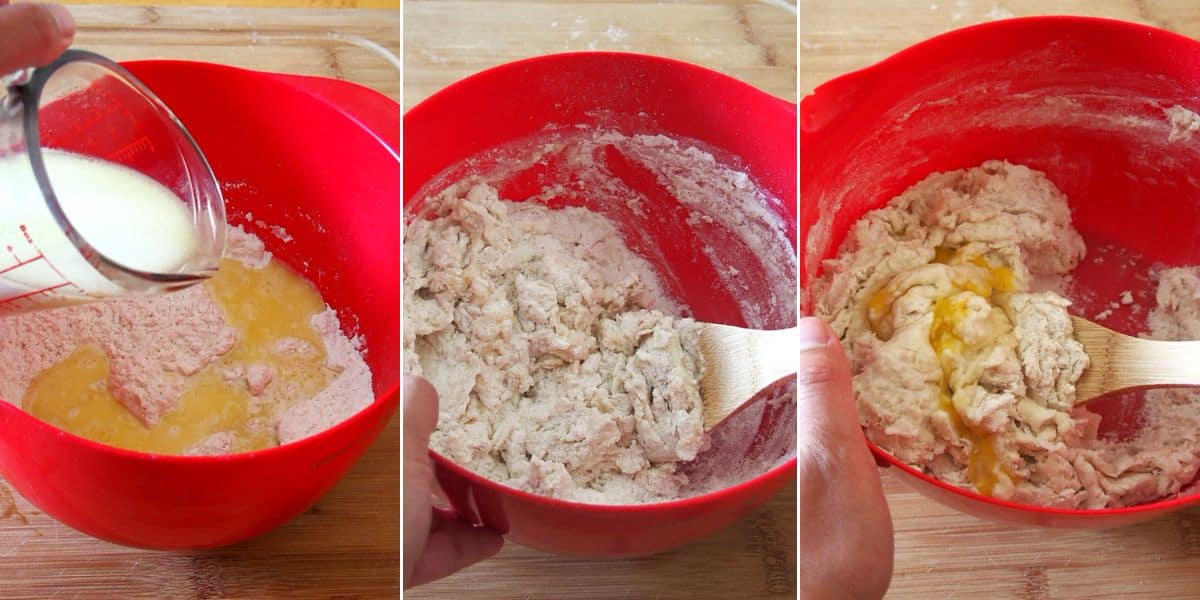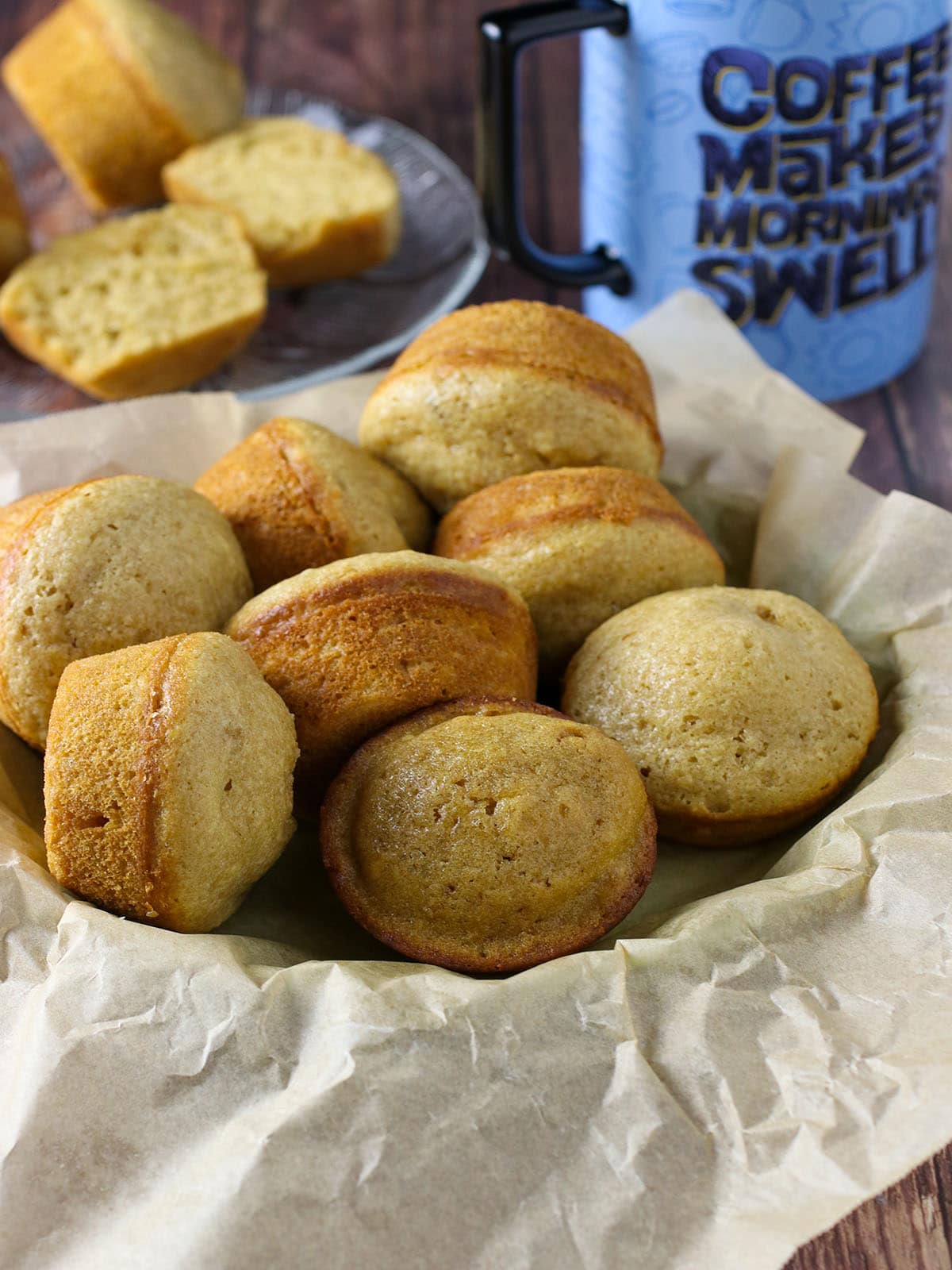Monggo Loaf Bread with soft, pillowy bread and sweet mung bean filling is a fabulous breakfast or midday snack. Enjoy a slice (or two) with coffee or tea.

Hello everyone! It is me again, Sanna. It's been a while since my last post here on Kawaling Pinoy, and I am excited to return with a special recipe you'll love.
When Lalaine asked me to do a post this month, I straight away suggested monggo bread. It uses one of my favorite dough recipes, which is beginner-friendly, foolproof, and requires only one rise.
It also bakes up soft and pillowy, the perfect canvas for the perfectly sweetened monggo filling! You can slice the loaf neatly with a knife or pull it apart with your hands for more fun. Either way, you will love it paired with coffee or tea.

Making the Monggo filling
- This bread loaf uses red mung beans, which are different from the green ones we use in our savory soups. Also known as adzuki beans, they're smaller in size with shiny red skin. They're abundant in East Asia and mainly cultivated in China, Taiwan, Japan, and Korea. They're also readily available in the Philippines and applied in many Filipino sweets and baked goods such as halo-halo, buchi, and hopia
- I like to pre-soak the beans to help them soften quickly, but you can skip this step and cook them longer.
- The filling can be made a day before and stored in the refrigerator until ready to use. Just take it out of the fridge about half an hour before assembly so it will be easier to spread.

Making the bread dough
- The recipe uses instant dry yeast, which is added directly to the flour mixture without proofing.
- In a microwave-safe bowl, combine butter, milk, and water. Microwave until butter is melted, and the temperature of the mixture is at 110-115 F. If it exceeds this, cool down to the right temperature. Too hot, and you will kill the yeast.
- Add just enough of the reserved flour and keep mixing just until the dough starts gathering in the center. You might not need to add the entire ¼ cup. Set the rest aside for kneading later.

Kneading the dough
- Kneading is a process of working with the dough to develop the gluten, which will help hold its shape and give it texture.
- Use the heels of your palms on a floured surface and push the dough downwards and away from you. Use the weight of your lower torso as you push the dough. Once the dough has partially flattened out, fold it in itself and repeat the pushing/ flattening motion. Use a bit of flour to prevent the dough from sticking too much to the surface and your hands.
- As you progress, you will notice that the dough sticks less. It would turn from being shaggy and sticky to smooth and stretchy. To test, pull out a small portion, and spread it using your fingers into a square. The dough should stretch thinly and form a translucent window in the center without breaking.

Assembling the bread loaf
- Roll the dough and slightly stretch the sides as necessary to make the edges somewhat straight. Use an angled spatula to spread the red bean filling on the surface.
- Starting on the short side of the rectangle, roll the dough, tightening it up as you go, into a log. Do it carefully to keep the filling from oozing out.
- Use a sharp knife to divide the log into four equal portions. Score the dough first before cutting so you get nice, even cuts. Place them cut side up in a greased 9x5 inch loaf pan.

Proofing and baking the bread loaf
- The dough will rise best in the range of 75 F to 85 F. If your house is too cold, turn on the oven at 200 F and then turn it off. Place the dough in the center of the oven to rise until puffy and doubled in size.
- Check halfway through bake time and loosely tent with foil if it's browning too quickly.

How to serve and store
- Pan de monggo is delicious for breakfast or a midday snack. Enjoy it with coffee, tea, or your favorite cold drinks.
- The bread should keep at room temperature for about a day or two. It's best to freeze it for longer storage. Wrap the loaf tightly in aluminum foil, place it in a resealable freezer bag, and freeze for up to 3 months.
T
More baked goods
Ingredients
For Monggo Filling
- 1 ¼ cup red mung beans
- 1 cup sugar
- water
For the Bread Dough
- 2 ½ cups all-purpose flour
- 3 tablespoons sugar
- 1 teaspoon salt
- 2 ¼ teaspoons instant dry yeast
- 3 tablespoons butter
- ½ cup water
- ¼ cup milk
- 1 large egg
Instructions
Monggo Filling
- Rinse the beans well. In a large bowl, place the beans in a bowl and enough water to cover for about 2 inches. Soak overnight.
- Drain the soaked beans and discard the water. Transfer beans in a medium saucepan and add enough water to cover for about 2 inches.
- Over medium heat, cook, occasionally stirring, for about 20 to 25 minutes or until tender.
- Let softened beans cool to room temperature. Transfer the beans to a blender and just enough liquid to help process efficiently. Process into a thick puree with little chunks of skin.
- In a medium saucepan, combine pureed beans and sugar. Stir until incorporated. Over medium heat, cook the mixture, stirring constantly, to a thick paste.
- Remove from heat and let cool completely.
Bread Dough
- In a large mixing bowl, combine 2 ¼ cups of the flour, sugar, salt, and yeast. Whisk until well-incorporated.
- In a microwave-safe bowl, combine butter, water, and milk. Microwave until butter is melted and the temperature of the mixture is between 110 to 115. If too hot, cool down to the right temperature before proceeding to the next step.
- Add the butter mixture to the dry ingredients. Using a wooden spoon, stir the until moistened.
- Add the egg and mix briefly.
- Add the remaining ¼ cup of flour in increments. Once the dough gathers into a rough ball and pulls from the sides of the bowl, stop adding flour.
- Turn the dough over in a floured board. Using hands, knead for about 7 to 10 minutes or until the dough is smooth and no longer sticky.
- In a bowl, place dough and cover with a clean kitchen towel. Let rest for ten minutes.
Assembly and Baking
- On a flat surface, roll the dough into a 14x10 inch rectangle.
- Using an angled spatula, spread the red bean filling over the surface of the dough to an even layer.
- Starting on the shorter side of the rectangle, roll the dough into a log, tightening it as you go. Be careful to ensure filling does not ooze out.
- Using a sharp knife, cut the log into 4 equal portions. Place them side up in a greased 9x5 inch loaf pan.
- Let rise, uncovered, for 1 ½ to 2 hours or until puffy and double in size.
- Preheat oven to 350 F.
- Bake in the oven for about 18 to 22 minutes or until the top is nicely golden.
- Check the loaf halfway through bake time. If browning too quickly, loosely tent with foil.
- Remove from oven and allow to cool before slicing.
Video

Nutrition Information
“This website provides approximate nutrition information for convenience and as a courtesy only. Nutrition data is gathered primarily from the USDA Food Composition Database, whenever available, or otherwise other online calculators.”








Joy Jeciel says
Made 2 loaves today. My family loved them. Will make again soon! Thank you for the recipe. Will make pianono next time!
Lieza says
Can I make the dough in a bread maker? Thanks.
Lalaine Manalo says
I've never tried it, but I'm sure you can. Let me know how it turns out 🙂
lorena carreon says
thanks so much for the recipe im gonna try it , cos i love to have my own bread tasty learn from the experties
Lalaine Manalo says
Happy baking!
Annie says
Hello. I will try to do this tomorrow. Is it ok to just let it rise in a warm place (kitchen top) and not inside the oven?.
Lalaine Manalo says
Yes, you can proof the dough on the kitchen countertop.
Mommy Jing says
Hi Ms. Lalaine,
Is it okay to use the green mung beans? I have that available now. Thank you 🙂
Lalaine Manalo says
I haven't tried it in this recipe, but I think it might work.
Ness says
Hi! Is it okay to use red kidney beans for the filling instead of the small ones (mung beans)? Need your advice, please.
Lalaine Manalo says
I've never tried them but I think they'd work.